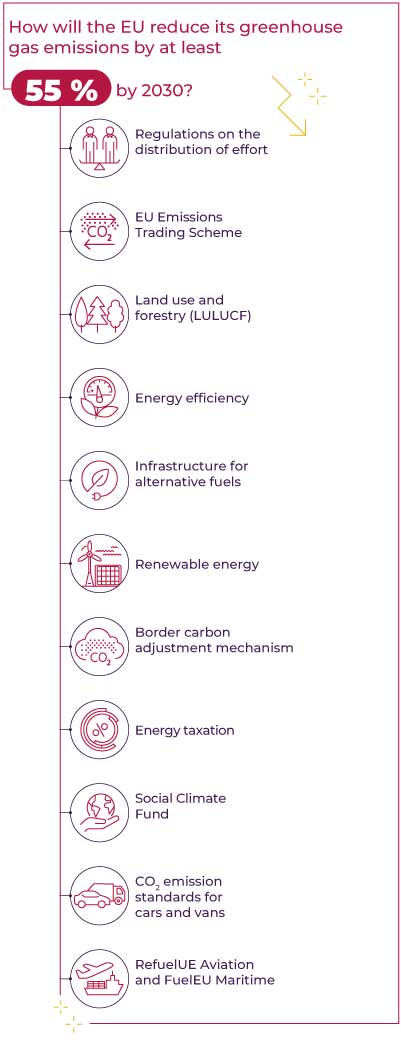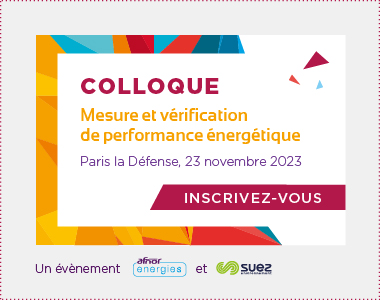By giving priority to fossil fuels that emit greenhouse gases, the manufacture and use of energy is making a major contribution to climate change, whatever the use: transport, buildings, industry, etc.
The energy issue is therefore inseparable from the carbon issue.
The ecological transition to a low-carbon world necessarily requires an energy transition.
Asking energy to emit less carbon requires three levers of action:
- Energy sobriety: consume less to emit less, even if it means giving up some uses
- Energy efficiency: consuming better, emitting less for the same use
- The use of decarbonized energies to replace carbon-based fossil fuels, to emit less for the same amount of energy.
What is the decarbonization trajectory for Europe and France?
The European Union and France have signed up to the Paris Agreement, which aims to limit the rise in average global temperature. to less than 2°C above pre-industrial levels by 2100 .
This treaty, signed at the United Nations COP21 in December 2015, recommends doing everything possible to ensure that this rise does not exceed 1.5°C, which would already be the source of numerous disorders and extreme weather phenomena.
This objective presupposes drastic reductions in greenhouse gas emissions, in the knowledge that these efforts will not pay off immediately: because of climate inertia, even at zero emissions, the planet will continue to warm.
In order to take the greatest possible action on its own territory, the European Union has set itself the target of achieving carbon neutrality by 2050, with an intermediate step in 2030: 55% less GHG emissions than in 1990.
To meet this intermediate target, Europe has set up the ” Fit for 55 ” program, a package of measures creating or revising provisions on climate and energy.
Fit for 55 is part of the European Green Deal , which will be drawn up in November 2019 and voted on in June 2021.
The Green Deal aligns Europe’s body of legislation with the target of warming by no more than 1.5°C by the end of the century.
France is taking part in this effort through the French Strategy on Energy and Climate ( SFEC ).
This roadmap, adjusted every five years, is set out in the French Energy and Climate Programming Act (LPEC), the National Low-Carbon Strategy 3 (SNBC3), the National Plan for Adaptation to Climate Change (PNACC) and the Multiannual Energy Programming (PPE).
It sets a target of 138 million tonnes of CO2 to be eliminated by 2030.
How will the EU reduce its greenhouse gas emissions by at least 55%?


What is carbon neutrality?
Is carbon neutral (Net ZeroA product, service or process that uses solutions that sequester atmospheric carbon in quantities equal to those emitted throughout its life cycle, from manufacture to final use or disposal.
Defined in this way, carbon neutrality refers to two fundamental concepts:
- the life cycle concept
- the concept of carbon accounting.
To avoid abusive claims of carbon neutrality and greenwashing, it is necessary to establish a framework for calculating lifecycle emissions. Consult voluntary standards that propose a common, recognized method. You can also follow the work of the future voluntary standard ISO 14068, which will provide recommendations for demonstrating carbon neutrality.
Watch our experts present AFNOR Energies’ low-carbon offer:
Key points to remember
- limit the increase in global average temperature to less than 2°C by 2100
- 2030: 55% less GHG emissions than in 1990
- target of 138 million tonnes of CO2 to be eliminated by 2030
- provide a framework for life-cycle emissions calculation methodologies


